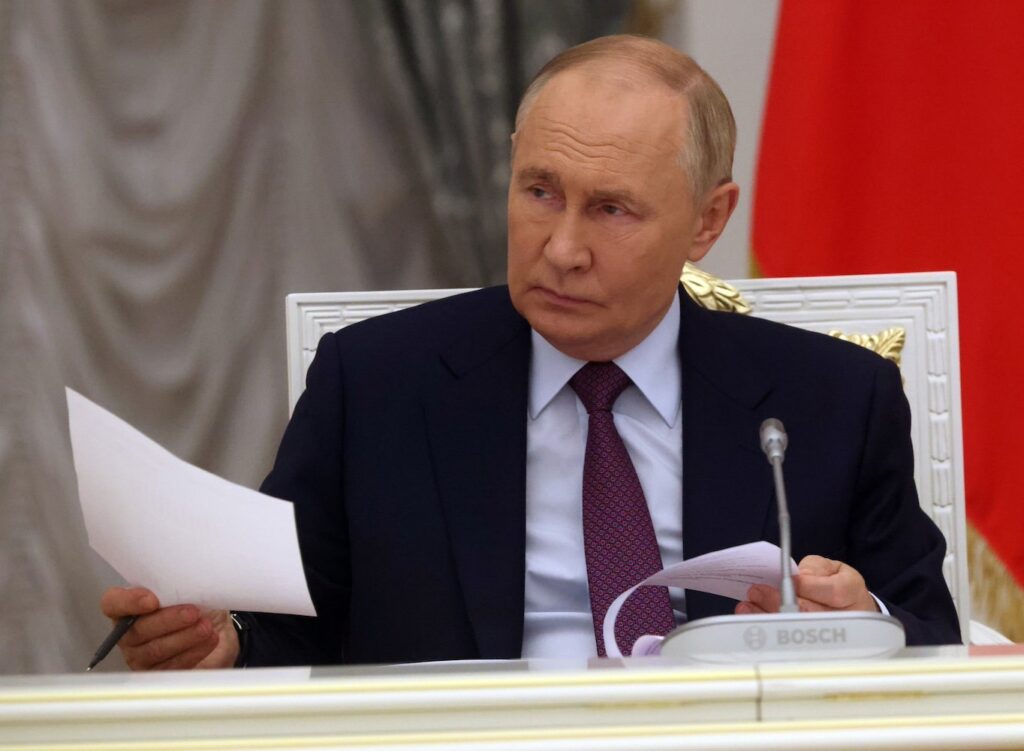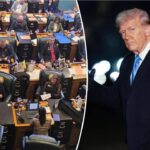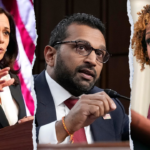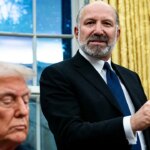The last remaining nuclear arms control treaty between the U.S. and Russia will expire in February 2026. While answering questions in St. Petersburg, Russian President Vladimir Putin dangled the possibility of extending it. The cost of the nuclear arms control treaty was subtle but clear. Putin wants everyone to ignore Kyiv’s “hysteria” over not being part of the negotiations for the end of Russia’s war in Ukraine.
The New Strategic Arms Reduction Treaty (New START) is an Obama-era treaty between the U.S. and Russia that limited the strategic nuclear arsenals of both countries. Putin suspended Russia’s participation in the treaty in 2023. At the time, he said that he’d only start enforcing the treaty again if the U.S. stopped delivering aid to Ukraine and wrapped the U.K. and France into the treaty.
According to the Russian state-backed news agency TASS, Putin has put New START back on the table. “Everyone has probably forgotten about it,” Putin said. “I would like to remind you that exactly one year from now, in February, the Treaty on Measure for the Further Reduction and Limitation of Strategic Offensive Arms will expire.”
The comments about the resumption of New START come at a delicate time for relations between the U.S. and Russia. Moscow first invaded Ukraine in 2014 then launched a full-scale ground invasion in 2022. Trump has repeatedly said that it would never have happened had he been president and that he wants to make a deal to end the war. Their depiction of events is that Ukraine used American money to force Russia to invade it.
Negotiations between the White House and the Kremlin to end the war have been ongoing in Saudi Arabia. Kyiv is noticeably absent from the table. Trump and Shadow President Elon Musk have blamed Ukraine for Russia’s war of aggression in public and called for President Volodymyr Zelensky to face an election.
After he mentioned New START, Putin chided Ukraine for wanting to be part of the talks that will supposedly end the war inside of it. “Do they want to sit here at the negotiating table and be mediators between Russia and the United States? Probably not. Why the hysteria here? It is misplaced,” Putin said.
Nuclear diplomacy is all about signaling. Both the United States and Russia have more than 5,000 nuclear weapons each. That’s enough to destroy the entire world several times over. Neither side wants to use them, but they want to keep them so the threat that they might use them one day is ever-present.
Since 2022, Russia has spent a lot of time sending signals that it would be prepared to use nuclear weapons if the war in Ukraine doesn’t go its way. Putin has touted the new nuclear weapons Moscow is building and Russian media constantly talks about nukes, where to use them, and how to survive them.
New START limited the amount of strategic nuclear weapons the U.S. and Russia could deploy. It was a complicated treaty that allowed both sides to visit nuclear installations in either country to make sure everyone was keeping to the bargain. COVID-19 eliminated on-site inspections and things never quite got back on track. Putin suspended Russia’s participation in 2023.
Trump has said he wants to rid the world of nuclear weapons and dangling the resumption of New START in front of him is a clear signal from Putin that he could at least meet the U.S. president part of the way. But Trump also spent his first term shredding the existing nuclear arms control treaties. DOGE fired hundreds of members of the National Nuclear Security Agency before realizing they’d screwed up and attempting to hire them back. Secretary of Defense Pete Hegseth said he wants to cut $50 billion from the Pentagon’s budget but promised not to touch the $2 trillion the U.S. plans to spend on modernizing its nuclear arsenal.
On February 19, the U.S. did its own bit of nuclear signaling. As part of routine operations, the Air Force and Space Force joined together to test launch a nuclear-capable Minuteman III intercontinental ballistic missile. By all accounts, it went well.
“Today’s Minuteman III test launch is just one of the ways the Department of the Air Force demonstrates the readiness, precision, and professionalism of U.S. nuclear forces,” Acting Secretary of the Air Force Gary Ashworth said in a press release.
“It also provides confidence in the lethality and effectiveness of the nation’s nuclear deterrence mission.”







